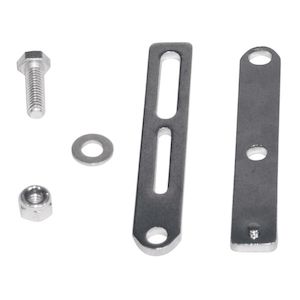While trying to help diagnose a problem over the phone, the topic of intake leaks came up. Intake leaks suck, literally and figuratively, and they're common. Lucky for you, I have a garage tip to help you find the problem and suggestions for fixing them.
An intake leak happens when a portion of the intake tract downstream of the fuel delivery device is breached. Unmetered air enters the engine. This is problematic because the air/fuel ratio is affected. Even though your bike might have been tuned to peak performance, the additional air makes the mixture leaner and can raise engine temperatures, especially on air-cooled engines. The best-case scenario involves rideability issues. Worst case? You’ll put a big fat hole into the top of a piston.
Two textbook symptoms of an intake leak are a high idle and “hanging revs.” If your bike suddenly starts idling higher for no particular reason, an air leak might be to blame. And hanging revs? Well, if you pull the clutch in and close the throttle abruptly and the engine revs don’t fall immediately, you probably have an air leak. (This can also be attributed to EFI programming, in order to help emissions numbers, but if the revs just start hanging one day, suspect an intake leak.)
If you’re not sure if you have an intake leak and want to check, there’s a trick a greybeard taught me that I still use today. Start the bike up and keep it running. (Usually gross intake leaks bad enough to keep the bike from idling are audible!) At this point, grab your propane torch. Yup, the same one you use for sweating copper pipes. Turn on the gas, but don’t light it. Direct the propane near the intake, and methodically work your way around the entire intake. If you hear the idle speed of the bike suddenly pick up, you’re in the area of the leak. A localized visual inspection usually ferrets out the issue. Look for signs of gasket or seal failure, or a cracked manifold. Protip: If you can't weasel the torch head into the nooks and crannies of your bike, remove the torch's nozzle and slip a rubber hose over the brass torch head. That'll get you into even the tightest spaces.

The less-common item is a cracked vacuum hose. Often, bikes will develop intake leaks from a rubber hose that was run to actuate an item, but the hose deteriorates. The hose I see die most often is usually on older metric bikes that use a vacuum-operated petcock.
Domestic V-twins suffer intake leaks, too, but usually for different reasons. I see intakes that are poorly aligned with cylinder heads after top-end work from time to time. Some mechanics don’t realize that the best seal often comes from orienting the intake the way it wants to sit, then bolting down the heads.

The more frequent cause of intake leaks on Harley-Davidsons is much less mystical, though. It’s a simple lack of carburetor support. On later model Harley-Davidson motorcycles, the factory throttle bodies and carburetors are affixed to the heads very securely. On earlier bikes and bikes that have been fitted with aftermarket carbs, however, properly securing a carburetor often does not receive adequate attention.

The solution in this case is twofold. The first step is to replace the manifold gaskets or rings. They have likely deformed as the carb bobbled around and hung down since its weight was unsupported.

As a leak worsens, you’ll probably start to notice symptoms. The engine will probably run rough and be hard to start, especially in cold weather. Of course, it should go without saying that leaks make tuning difficult at best. If the condition worsens and it’s ignored for long enough, a combination of advanced ignition timing, hot weather, and heavy load can actually burn a hole right through your piston top, so this is one of those problems that’s better reckoned with sooner than later.
An intake leak sucks. But it doesn’t have to.


















